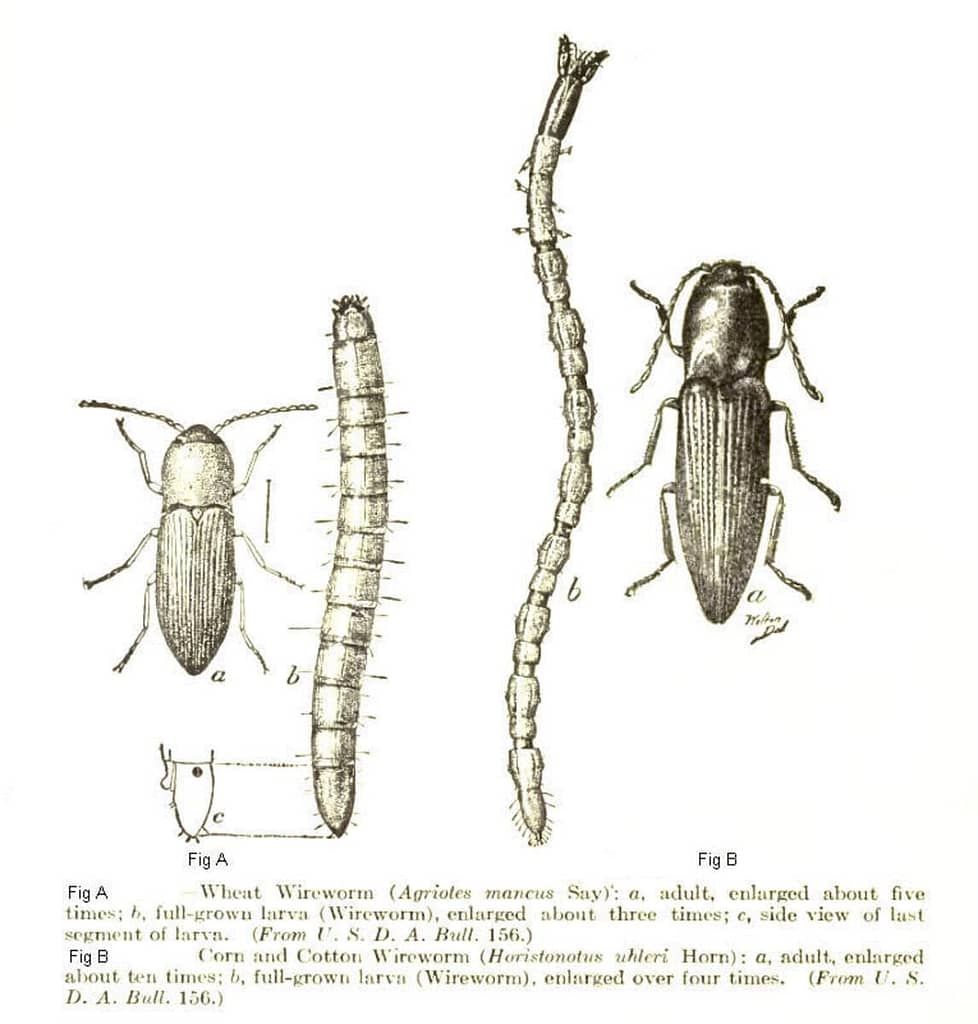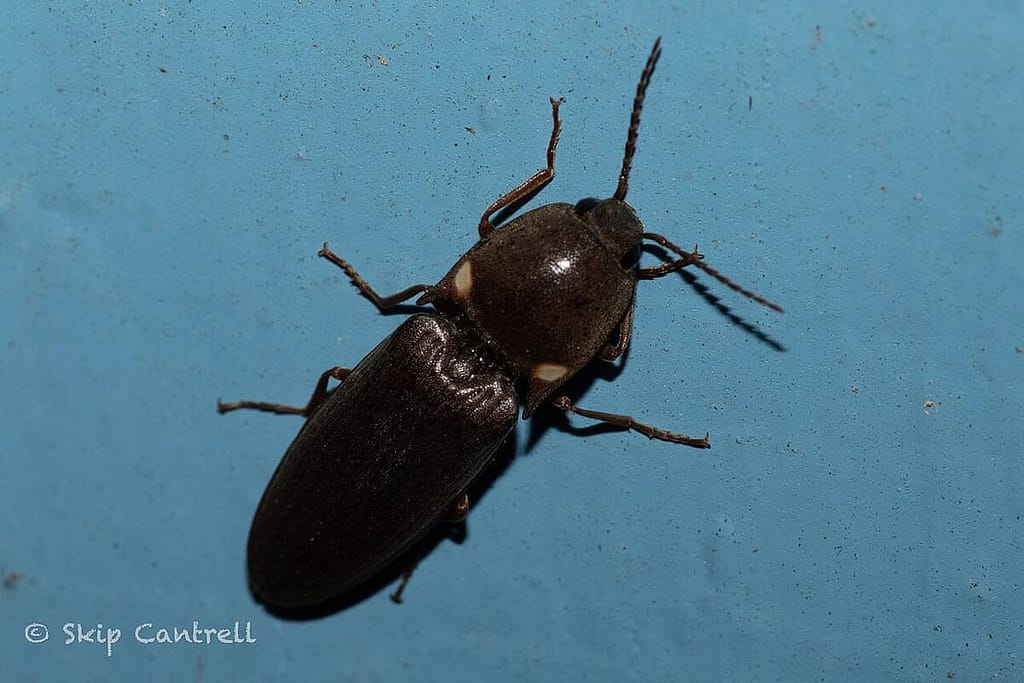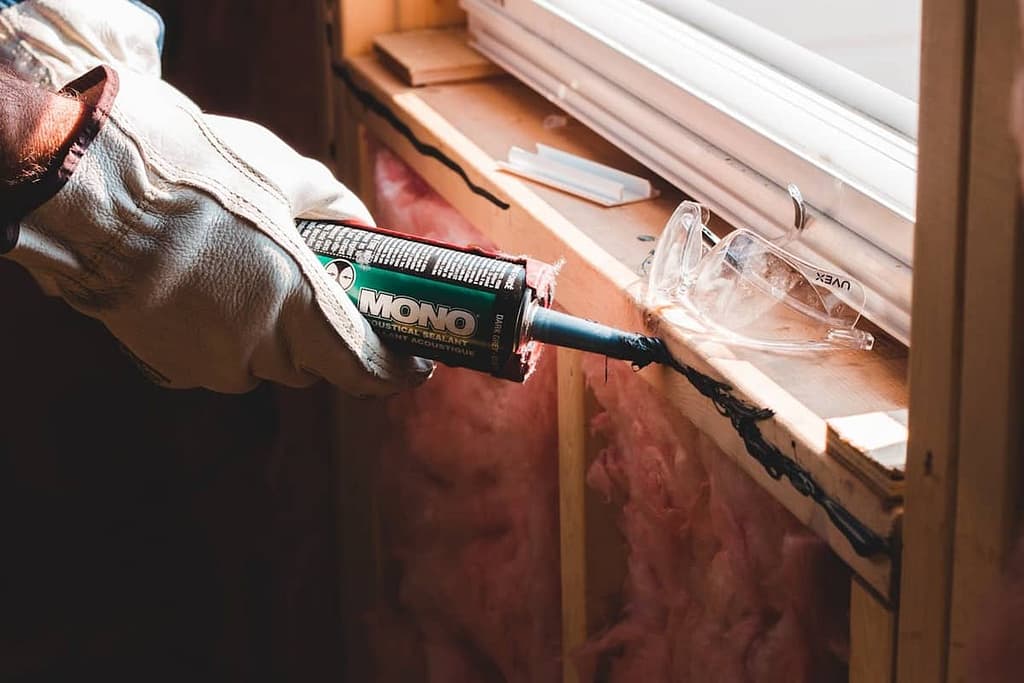Click beetles, found across the globe, are known for the characteristic clicking sound they produce. While these beetles are generally harmless, their larvae, also known as wireworms, can cause significant damage to crops, leading some to view them as pests.
With thousands of species, click beetles range from plain to intricately patterned, and some even exhibit bioluminescence. This diversity, combined with their fascinating clicking mechanism, makes click beetles one of the most intriguing groups in the beetle family.
Click Beetles: A Double-Edged Sword
The impact of these pests on ecosystems is multifaceted. While some species’ larvae can damage crop roots, others play beneficial roles by decomposing organic matter, preying on harmful insects, or even controlling plant growth.
Adult click beetles often serve as a food source for larger animals, but their clicking defense mechanism can help them evade predators.
Discovering Click Beetles: The Remarkable “Jumping” Insects of the Elateridae Family

The Elateridae family, better known as click beetles—and sometimes called spring beetles, snapping beetles, or skipjacks—are intriguing insects famous for their distinctive “clicking” ability.
This unique trait was first documented by British zoologist William Elford Leach in 1815, distinguishing the Elateridae family from other click-capable beetle families like Eucnemidae and Cerophytidae.
Click beetles are truly global, with around 9,300 known species across the world, including 965 in North America. They get their name from their unique “click” mechanism: when a spine on their prosternum snaps into a notch on the mesosternum, it creates a sharp clicking sound and propels them into the air.
This jumping action helps them escape predators and can also flip them upright if they end up on their backs.
While most Elateridae species have this clicking ability, they aren’t the only ones—other beetle families within the Elateroidea superfamily also share this fascinating adaptation.
The click beetle’s unique mechanism showcases one of nature’s most impressive survival strategies, and their remarkable agility makes them a captivating family of beetles to study and observe.
Description of Click Beetles
These insects have elongated, somewhat flattened bodies that can be rounded or tapered at the end. They have two clearly defined body sections. The front section has the head part and a frontal two legs. Similarly, the rear section has wings and the remaining two pairs of legs.
Most of these insects are black or brown in color, but some have yellow or red markings. Sizes vary significantly among species, ranging from as small as a quarter of an inch to as large as 2.5 inches.
What is the diet of click beetles?
While adult click beetles primarily rely on plant-based sustenance, such as foliage, nectar, and plant juices, their larval stage (wireworms) is where the real feeding frenzy occurs. The dietary preferences of click beetle larvae vary widely among species. Some feed on decaying organic matter in logs or soil, while others prey on the larvae of other insects.
However, a significant number of species are herbivorous, consuming plant material like roots, seeds, and sprouts. In certain cases, these plant-eating larvae (wireworms) can cause significant damage to crops.
What are Wireworms?

Photo by Katja Schulz (CC BY 2.0)
Wireworms are the larval stage of click beetles. True to their name, they are long, slender, and hard-bodied, resembling small wires. Their bodies are segmented and often have a shiny appearance. While many species are white with reddish-brown heads and tails, variations in color can occur.
These pests lack prolegs and possess three pairs of legs situated directly behind their heads. They resemble mealworms commonly found in bait shops or soil centipedes with only six legs.
Host Plants
Wireworms are voracious feeders and can damage a wide range of plants. In regions like Georgia, they pose significant threats to crops such as sweet potatoes, peanuts, corn, and tobacco.
Damage Caused
Wireworms can cause significant damage to crops at various growth stages. They attack germinating seeds of corn and small grains, leading to patchy stands. Young tobacco transplants are also targeted, resulting in weakened plants.
Peanuts and sweet potatoes suffer from wireworm feeding marks, which can range from small holes to larger, irregular ones. Severely damaged peanut pods may rot, while sweet potatoes, though capable of healing, may show blemishes that reduce their market value.
Life Cycle
The life cycle of wireworms varies depending on the specific species but generally spans from several weeks to two years. Both larval and pupal stages occur within the soil. Adult click beetles emerge during the summer months and are often found seeking shelter in protected areas during the day. At night, they are commonly attracted to artificial lights.
Control Measures
While complete eradication of wireworms is challenging, several strategies can help minimize their impact:
Field Selection: Avoid fields with a history of wireworm issues, as click beetles often return to familiar spots to lay eggs, especially in low-lying, sandy areas.
Chemical Control: Timely soil-applied insecticides can be effective, with preventative treatments typically working better than reactive ones.
Exploring Click Beetles: Fascinating Facts About These Unique Insects
Click beetles are an incredibly diverse family of insects, with thousands of species worldwide and nearly a thousand found in the United States alone. These beetles get their name from their unique “clicking” mechanism, which they use to flip themselves over if they’re on their backs.
Among the many species, two types stand out for their distinctive features:
1.) Eyed Click Beetle (Alaus oculatus)
One of the most eye-catching types of click beetles, the Eyed Click Beetle, is known for the large, round “eye spots” on the back of its head that mimic eyes. These markings can serve as a defense mechanism, tricking potential predators into thinking the beetle is larger and more formidable.
Eyed Click Beetles typically grow to about an inch and a half in length and have a mottled, black-and-white appearance. They’re commonly found throughout the eastern United States, ranging as far west as Texas and South Dakota.
2.) Glowing Click Beetles (Genus Deilelater)

tcantrell52, Deilelater physoderus (Germar, 1841) iNaturalist 93648074, CC BY 4.0
Some click beetles are bioluminescent, a unique trait that sets them apart from their relatives. These glowing click beetles, like those in the genus Deilater, have small spots on their bodies that emit light, similar to fireflies.
However, unlike fireflies, glowing click beetles don’t flash their lights; instead, they may adjust the brightness to suit their surroundings. Interestingly, their larvae also glow, making them a fascinating subject for study among bioluminescent creatures.
These insects are not just interesting for their physical traits; they play essential roles in the ecosystem, from aerating soil to being a food source for other wildlife. Whether you’re spotting an Eyed Click Beetle’s distinctive “eyes” or catching a glimpse of a glowing click beetle’s light, these beetles showcase the incredible diversity of nature.
Where to Find Click Beetles
Click beetles are widespread creatures, inhabiting a variety of environments around the globe. You’ll find them in almost any location with suitable conditions, except for extremely cold, wet, or arid regions.
Gardens and Yards: These are prime locations for click beetles, especially those with grassy areas and leafy plants.
Forests and Woodlands: The diverse ecosystem of forests provides ideal habitats for various click beetle species.
Fields and Meadows: Open, grassy areas are also popular haunts for these fascinating insects.
Life Stages and Locations
Larvae: Click beetle larvae, often called wireworms, spend their lives underground, feeding on plant roots and other organic matter.
Adults: Adult click beetles are primarily nocturnal, so you’re more likely to spot them at night. They’re attracted to light, so you might find them buzzing around porch lights or resting on walls near light sources.
So, the next time you’re out in nature, keep an eye out for these intriguing insects. You may be surprised by where you discover them!
Signs of an Infestation

Beatriz Moisset, Melanotus leonardi, CC BY-SA 4.0
While click beetles are fascinating creatures in their own right, they can become a nuisance, especially when they infest gardens or homes. Here are some signs that you might have a click beetle problem:
Home Infestation
Visual Sightings: The most obvious sign is spotting an adult click beetle indoors. These insects are typically dark brown or black and can grow up to an inch long.
The “Click” Sound: As their name suggests, click beetles can produce a distinctive clicking sound when they flip themselves upright.
Garden Infestation
Plant Damage: The larvae of click beetles, known as wireworms, are the primary culprits behind plant damage. They feed on seeds, roots, and stems, causing significant damage to crops.
Chewed Seeds and Plant Parts: Look for irregular holes in seeds and chewed-up plant parts.
Stunted Growth: Infested plants may exhibit stunted growth and yellowing leaves.
Why Do Click Beetles Invade?
Click beetles typically don’t invade homes, but in years when their populations are unusually high, you may occasionally find them indoors.
Light Attraction: Adult click beetles are attracted to light, which can draw them indoors, especially during nighttime.
Soil Conditions: Wireworms thrive in undisturbed soil, particularly those that have been used for growing crops like alfalfa, grain, or cover crops.
Moisture levels: Click beetles thrive in moist environments. Water leaks in or around your home, overwatering plants, and similar issues can create moist environments.
If you suspect a click beetle infestation, it’s crucial to address it promptly to avoid further damage. Consulting a pest control expert is recommended for effective treatment options in such cases.
Are Click Beetles Dangerous?
In general, click beetles do not pose major health risks to humans. They aren’t venomous, and their primary concern is protecting themselves. While they might bite if handled roughly, it’s not a common occurrence and usually isn’t painful.
Although their sudden jumps can be a bit startling, there’s no need to worry—click beetles are harmless and won’t cause any serious damage.
Treating Infestations

Here are some practical steps to effectively manage and reduce click beetles in your home or garden:
Managing Home Infestations
Identify Entry Points: The first step is to determine how click beetles are entering your home. Common entry points include gaps under doors, around windows, and through damaged screens.
Seal Entry Points: After locating entry points, seal them securely. You can make use of caulk or weatherstripping for this purpose.
Install Window Screens: Use fine-mesh screens on windows and doors to keep out these pests.
Dim Indoor Lighting: Click beetles are drawn to light. Lower indoor lighting levels, particularly near entry points, to help keep them out.
Managing Garden Infestations
Crop Rotation: Rotate your crops to disrupt the life cycle of wireworms. Avoid planting susceptible crops like corn, potatoes, and beans in the same area year after year.
Clean Cultivation: Practice good agricultural practices, such as removing crop residues and weeds, to reduce wireworm populations.
Soil Solarization: This technique involves covering the soil with clear plastic sheets to heat it up, killing pests like wireworms.
Turn the soil: In the garden, till the soil to disrupt beetle larvae (often called “wireworms”), which can help reduce their population over time.
Biological Control: Encourage birds and beneficial insects like ground beetles and predatory nematodes, which prey on click beetle larvae.
Natural Treatments: Neem oil and diatomaceous earth can act as natural deterrents.
Chemical Control: In severe cases, you may need to use insecticides specifically designed for beetles. However, it’s important to consult with a local agricultural expert to choose the appropriate pesticide and application method.
By implementing these strategies, you can effectively manage click beetles and protect your home and garden from damage.
Frequently Asked Questions
When the beetle feels threatened or is flipped onto its back, it flexes its thorax and abdomen, creating a sudden release of energy. This rapid movement causes a small, peg-like structure on its thorax to snap into a groove on its abdomen. This results in the distinctive “click” sound.
This “click” not only produces a loud sound but also propels the beetle into the air, allowing it to right itself and escape potential predators.
Adult click beetles can be found in various environments. They are typically located on the ground, on plants, in decaying wood, or hiding under bark. You might spot them in areas with plenty of vegetation and soil, such as gardens, farmland, and wooded areas. They are most active at night, so you’re more likely to see them then.
You can find wireworms in soil, especially in fields, gardens, and areas with crops. They prefer moist conditions and are often near plant roots.
No, a click beetle is not the same as a cockroach. Click beetles belong to the family Elateridae and are known for their clicking mechanism. Cockroaches are from the order Blattodea and do not have this ability.
No, click beetles do not sting. While they may startle you with their clicking action or jumping ability, they are harmless and do not pose a threat to humans.
Curious Contemplations
Crown Gall: A Gardener’s Guide
Direct Plant Nutrition: A Guide to Foliar Feeds




